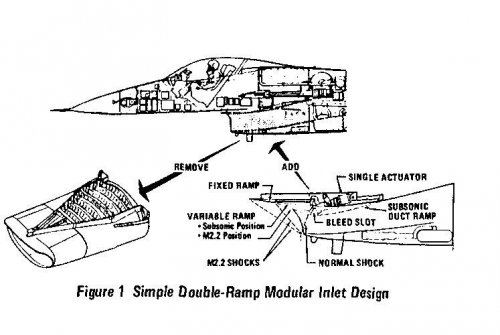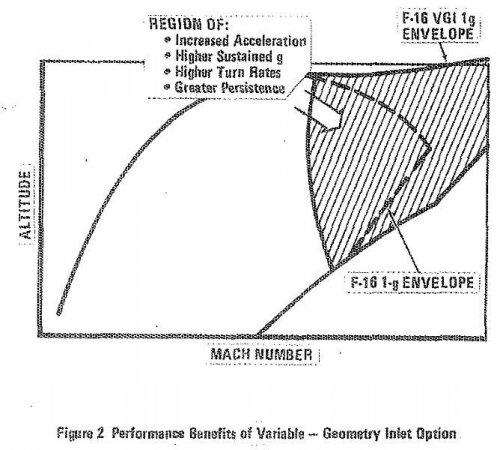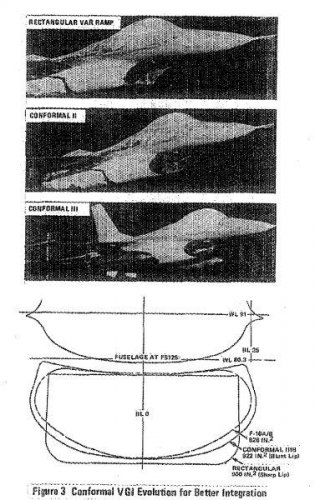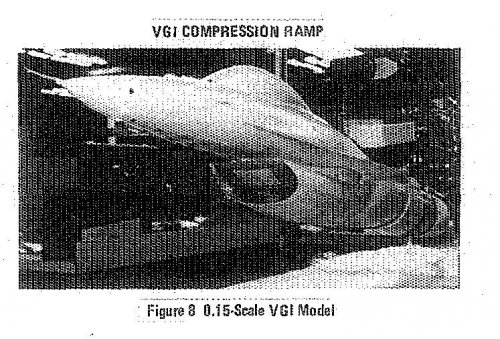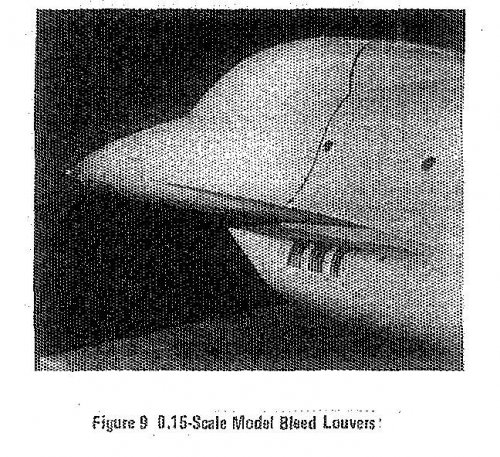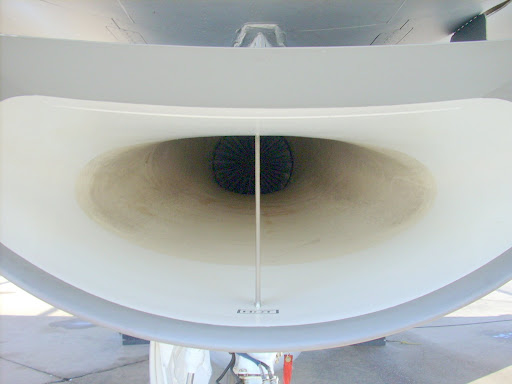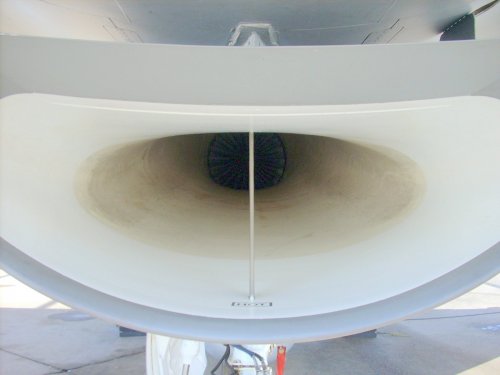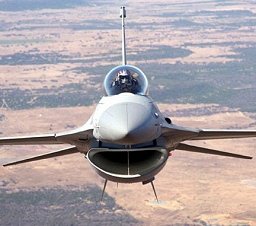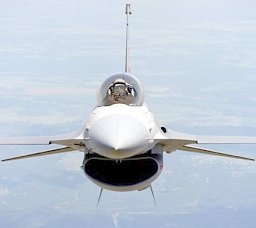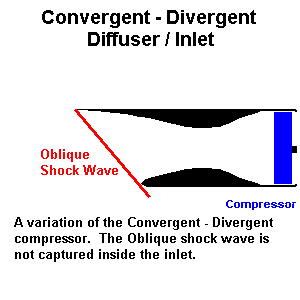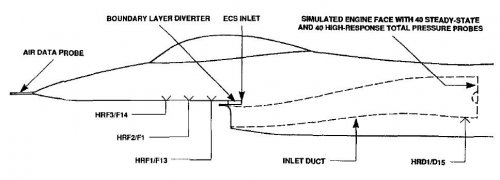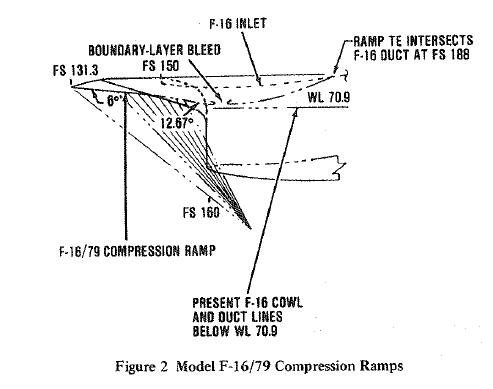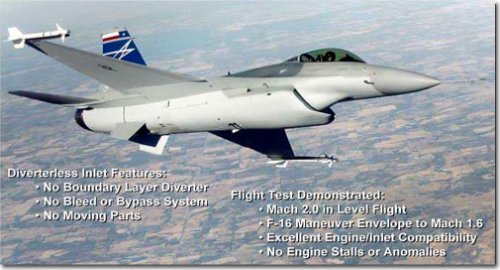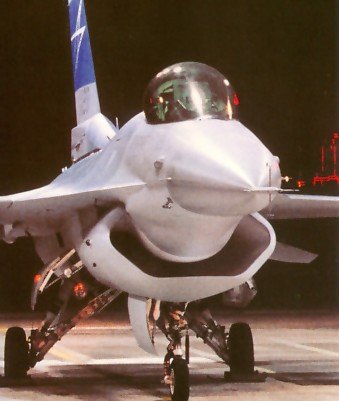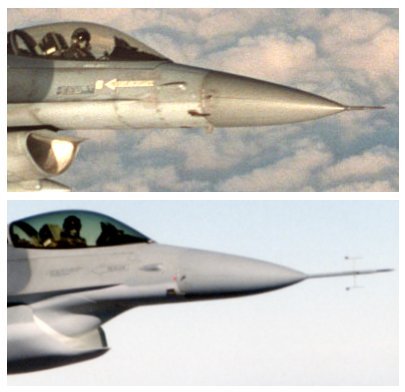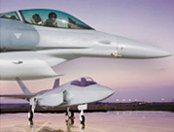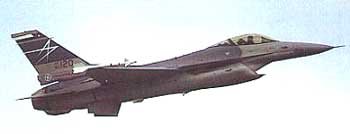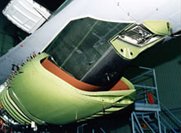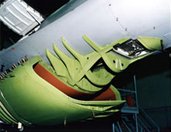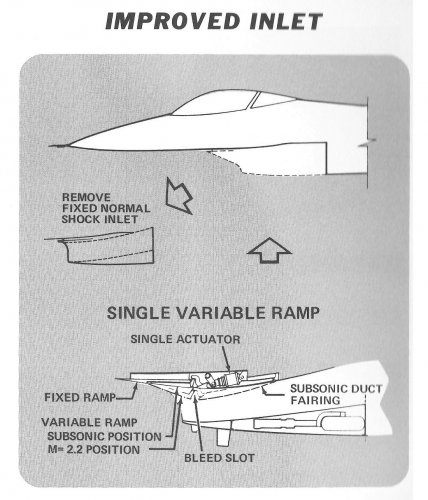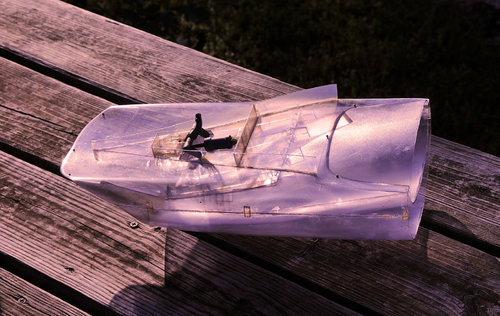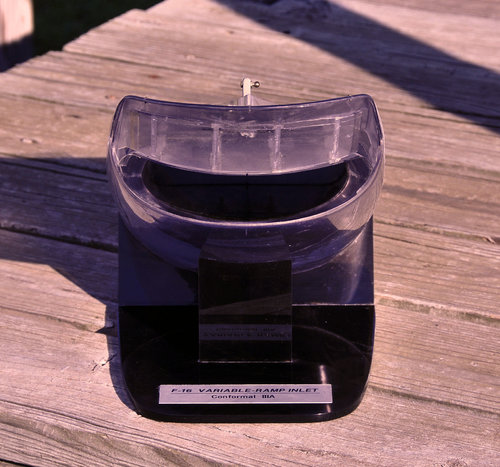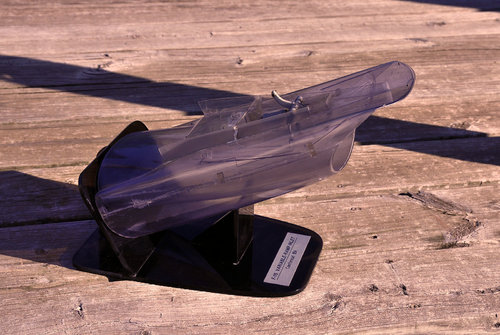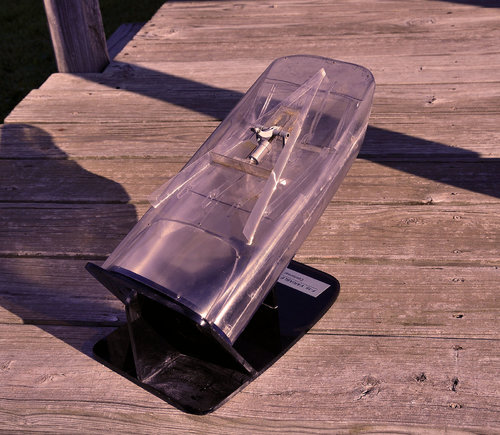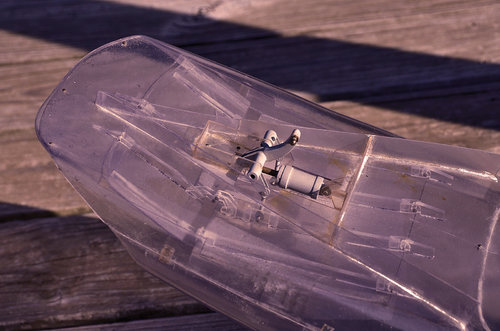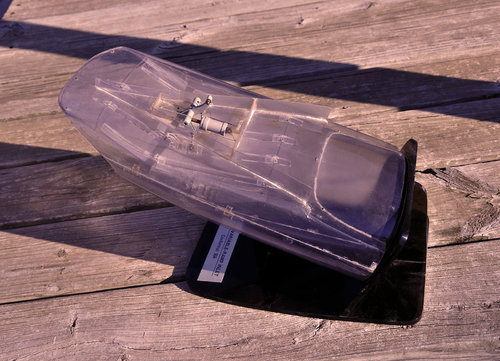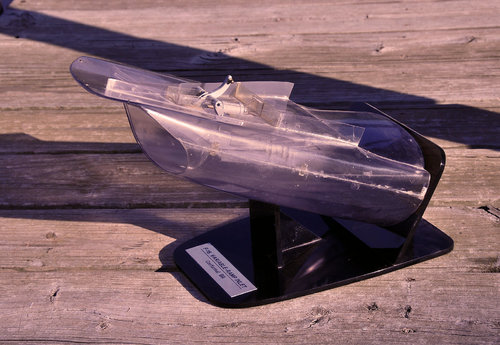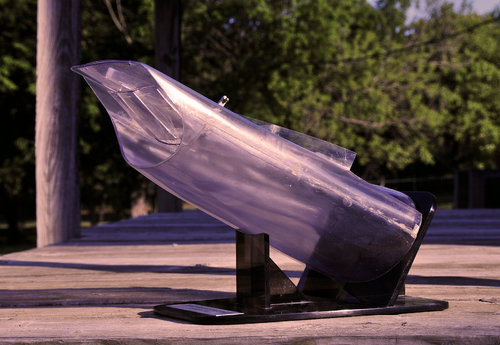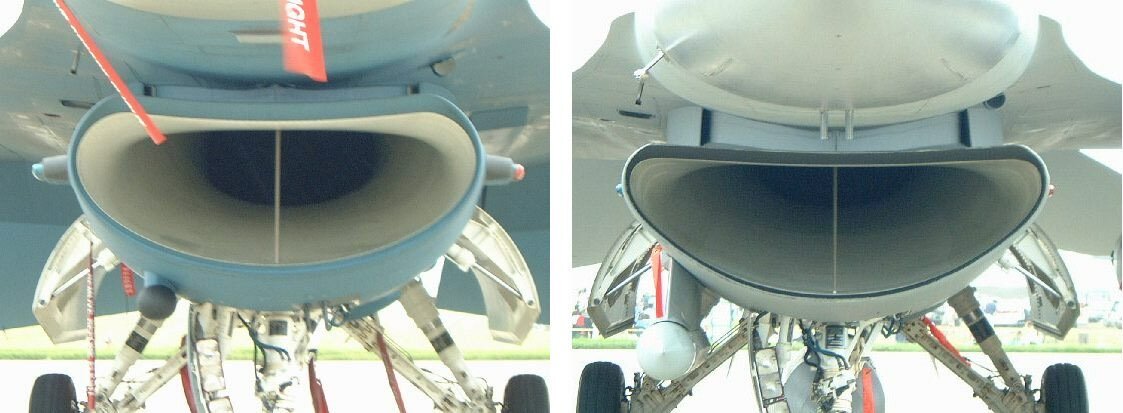- Joined
- 1 April 2006
- Messages
- 11,410
- Reaction score
- 10,394
From AIAA-81-1394
F-16 Variable-Geometry Inlet Design and Performance
L.G. Hunter and J.E. Hawkins
General Dynamics/Fort Worth,TX
"Advanced versions of the F-16 are being considered
to upgrade its present mission capabilities
as well as to expand its capabilities to embrace new
more demanding missions. The addition of a variable
geometry inlet (VGI) to the F-16, made possible by
the modular construction of the aircraft, has been a
designed-in capability since the start of the F-16
program. Fig. 1 illustrates the variable-geometry
inlet option being considered for advanced versions
of the F-16 currently in the prototype development
stage at General Dynamics' Fort Worth Division. Both
the variable-geometry and normal-shock inlet options
are available with the final choice dependent on the
future mission requirements of a production aircraft.
Fig. 2 illustrates the performance benefits of a
relatively simple, conformally shaped, variable-ramp
inlet design that has been developed for F-16 application.
Increased acceleration and higher speeds
to reduce intercept times, higher sustained load
factors and turn rates to outmaneuver advesary aircraft,
and greater persistence to enhance multiple
target and reattack capability at high supersonic
speeds, are chief benefits.
F-16 Variable-Geometry Inlet Design and Performance
L.G. Hunter and J.E. Hawkins
General Dynamics/Fort Worth,TX
"Advanced versions of the F-16 are being considered
to upgrade its present mission capabilities
as well as to expand its capabilities to embrace new
more demanding missions. The addition of a variable
geometry inlet (VGI) to the F-16, made possible by
the modular construction of the aircraft, has been a
designed-in capability since the start of the F-16
program. Fig. 1 illustrates the variable-geometry
inlet option being considered for advanced versions
of the F-16 currently in the prototype development
stage at General Dynamics' Fort Worth Division. Both
the variable-geometry and normal-shock inlet options
are available with the final choice dependent on the
future mission requirements of a production aircraft.
Fig. 2 illustrates the performance benefits of a
relatively simple, conformally shaped, variable-ramp
inlet design that has been developed for F-16 application.
Increased acceleration and higher speeds
to reduce intercept times, higher sustained load
factors and turn rates to outmaneuver advesary aircraft,
and greater persistence to enhance multiple
target and reattack capability at high supersonic
speeds, are chief benefits.

